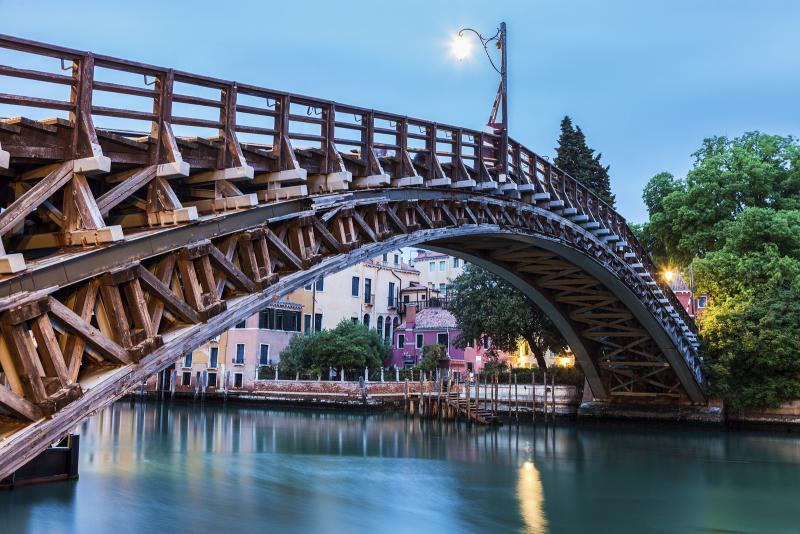The newly restored Ponte dell’Accademia in Venice is one of the four bridges crossing the Grand Canal, linking the sestieri of Dorsoduro and San Marco.
Designed and built in the mid-19th century, the Ponte dell’Accademia has always been an important link between the two sides of the Grand Canal, allowing transit both below and above its arcade. A wooden walkway was added in the 1933, which at the time made it the longest European bridge built of wood.
The wooden structure, which was originally intended to be temporary, deteriorated over the years and required constant maintenance work. That’s when Luxottica stepped in. The Italian company, now the world's largest in the eyewear industry, which was founded in the small town of Agordo (Veneto) in 1961, has financed a €1.7M restoration on the Accademia Bridge.
“There is a deep link between Veneto and Luxottica,” reports the Luxottica website. “The region is home to Luxottica’s first plant in Agordo – where it all started – as well as those in Cencenighe, Pederobba, and Sedico. This is why the company has decided to pay tribute to its historic relationship with the region and its people by funding restoration work on the Ponte dell’Accademia bridge in Venice.”
The restored bridge was unveiled at the end of August.
The Ponte dell’Accademia is the southernmost bridge of the four crossing the Grand Canal. It’s named for the Accademia di Belle Arti, which was housed in the Carità complex, right by the bridge, and now houses the Gallerie dell’Accademia, a museum gallery of pre-19th-century art.
People have been attaching ‘love locks’ to the metal hand rails of the bridge, in such numbers that at some point, local media reported, there were 20,000 padlocks on the bridge. Venice authorities have since attempted to crack down on it.
The other three bridges crossing the Grand Canal are the iconic Rialto, the Scalzi and the modern Calatrava.














